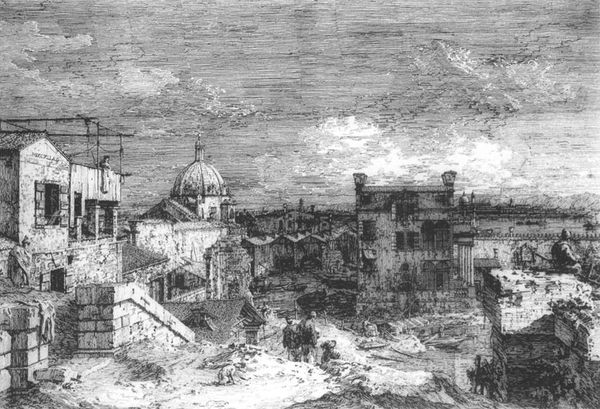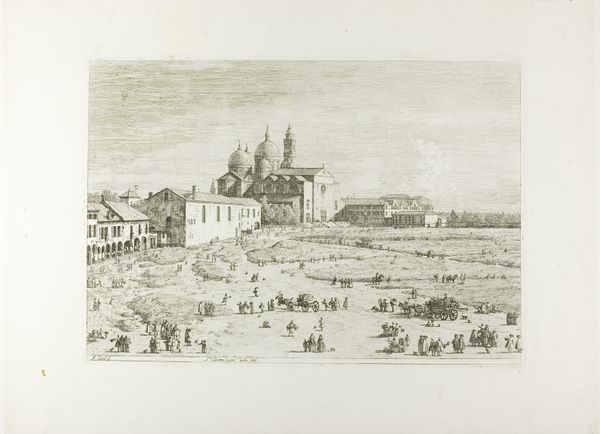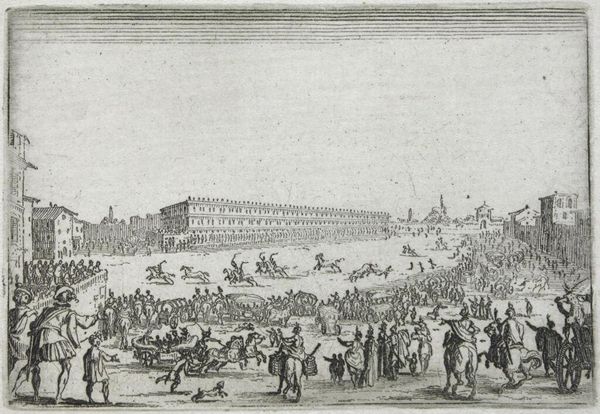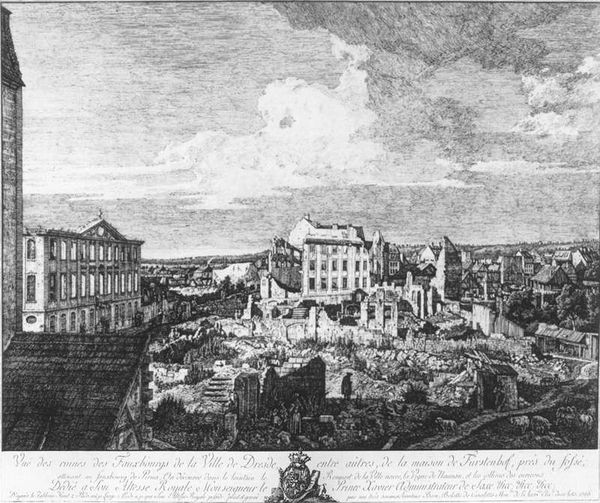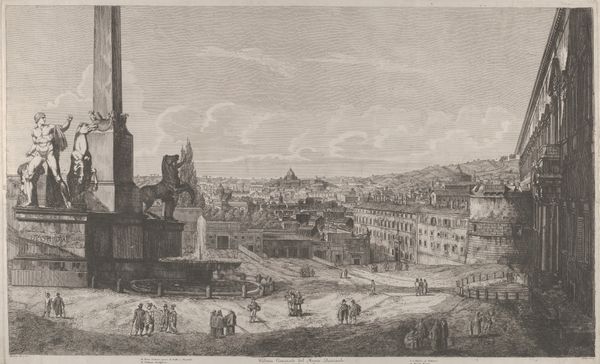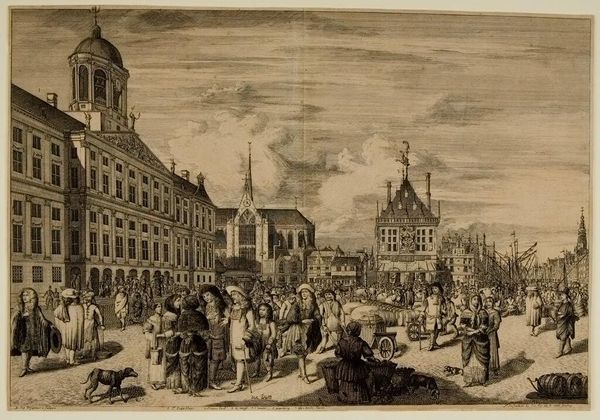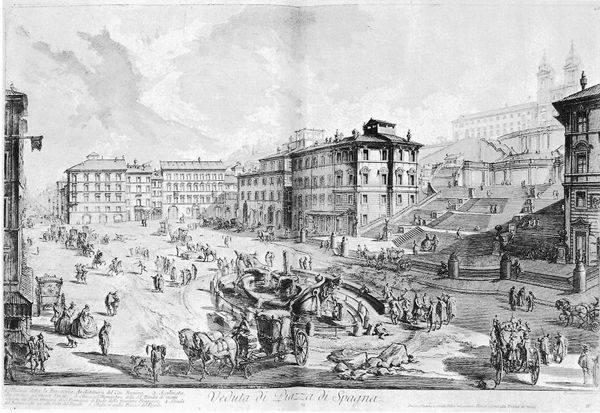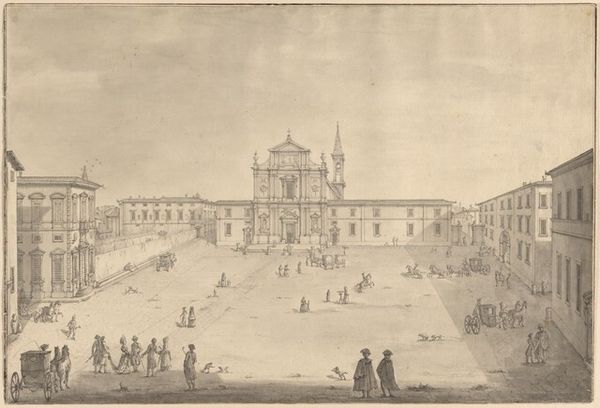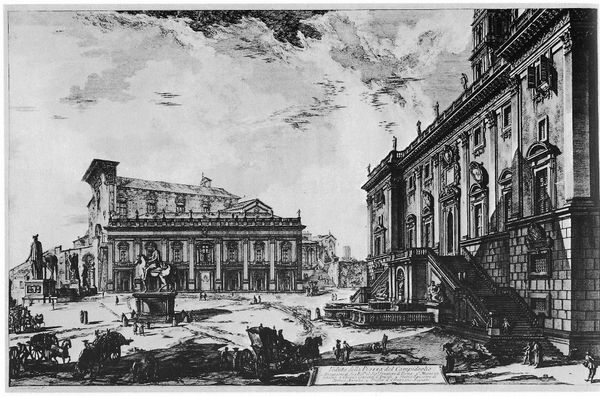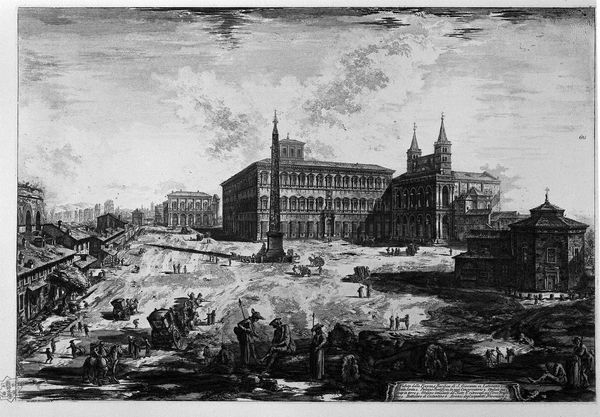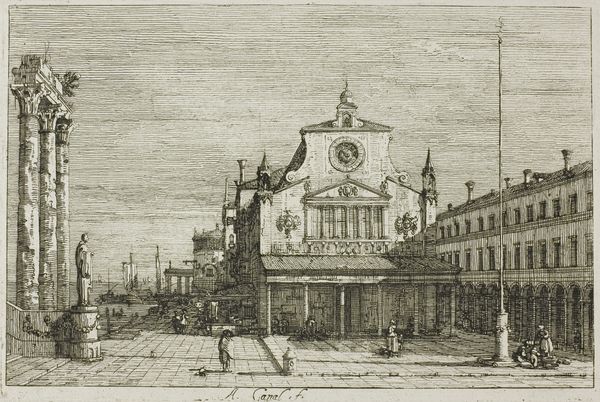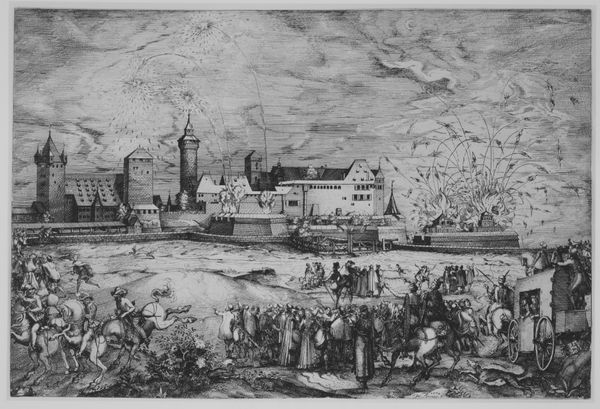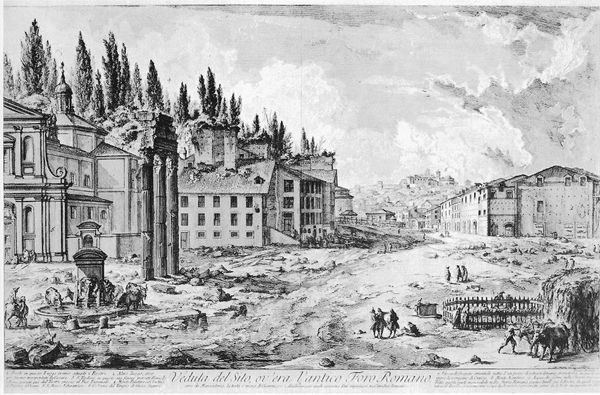
Padua: The Prato della Valle with Santa Giustinia and the Church of Misericordia 1740
0:00
0:00
drawing, pen
#
drawing
#
architectural landscape
#
baroque
#
landscape
#
perspective
#
charcoal drawing
#
pen
#
cityscape
Dimensions: 26.8 x 37.6 cm
Copyright: Public domain
Editor: Here we have Canaletto’s "Padua: The Prato della Valle with Santa Giustinia and the Church of Misericordia," created around 1740. It's a drawing using pen and charcoal, and the sheer scale of the space depicted is what strikes me first. What aspects of this drawing grab your attention? Curator: The layering of production is very present here. The pen and charcoal show the stages in its construction. Think about the material conditions; Canaletto would have relied on locally sourced paper, inks and charcoal—the very foundation upon which the ‘grand view’ is presented is inherently tied to Padua itself. We should not see drawings as separate from painting or the final printed article: drawings allowed workshops to organize the labor. What are the implications of his artistic choices? Editor: It’s interesting to think about how his choice of materials literally grounds the image in a specific time and place. And you’re right, the layering does become visible through the combined use of pen and charcoal. I hadn't considered the studio's perspective before, and how his practice organized labor within the space. How do you think this division of labor impacts our interpretation of the piece as a whole? Curator: Division of labor meant division of expertise. Apprentices often prepared materials like canvas and grounds before artists like Canaletto touched them. How would the workshops' access to raw materials, like high-quality charcoal, have affected what they made? Moreover, consider the consumption aspect; such drawings allowed for replication, prints, meeting demand for idealized Italian views from afar. How did this ‘industry’ change perceptions of both art and labor at that time? Editor: I’m struck by how the materials and the studio processes actually reinforce the feeling of expanse and openness in the finished work. It has shifted my view completely! Thanks for helping me consider this piece through the lens of production and consumption. Curator: It highlights the interconnectedness of the art object with social conditions of its production.
Comments
No comments
Be the first to comment and join the conversation on the ultimate creative platform.
